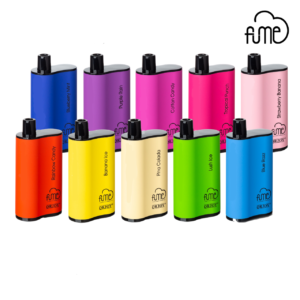Vaping has become a widely debated topic, with various myths and misconceptions surrounding its safety, effects, and societal impact. This comprehensive article aims to clarify the facts and dispel common myths surrounding vaping.
Myth 1: Vaping is Safe and Harmless
Fact: While vaping is often promoted as a safer alternative to smoking traditional cigarettes, it is not entirely without risks. E-cigarettes typically contain nicotine, which is highly addictive. Additionally, the long-term health effects of inhaling vaporized chemicals are still not fully understood. Research suggests that vaping may have adverse effects on respiratory and cardiovascular health.
Myth 2: Vaping Helps Smokers Quit
Fact: Some studies suggest that vaping can help smokers reduce or quit smoking traditional cigarettes. E-cigarettes deliver nicotine without many of the harmful chemicals found in tobacco smoke. However, vaping should not be considered a risk-free method of smoking cessation. It’s essential to consult healthcare professionals for personalized cessation strategies.
Myth 3: Secondhand Vapor is Harmless
Fact: Secondhand vapor from e-cigarettes can contain harmful chemicals, including nicotine and fine particles that can be inhaled by bystanders. While the concentrations are generally lower than from traditional cigarette smoke, exposure to secondhand vapor may still pose risks, especially in enclosed spaces.
Myth 4: Vaping is Just Water Vapor
Fact: Contrary to popular belief, the aerosol (vapor) produced by e-cigarettes is not simply water vapor. It consists of fine particles suspended in a liquid base (often propylene glycol or vegetable glycerin) that may contain nicotine and flavorings. The heating process can also generate potentially harmful chemicals, although typically in lower amounts than in cigarette smoke.
Myth 5: Vaping Doesn’t Appeal to Non-Smokers or Youth
Fact: E-cigarettes and vaping products, especially those with appealing flavors, marketing, and accessibility, have been found to attract non-smokers, including youth. The surge in vaping among young people has raised concerns about nicotine addiction and potential gateway effects to smoking traditional cigarettes.
Myth 6: Vaping Causes Popcorn Lung
Fact: “Popcorn lung” (bronchiolitis obliterans) is a serious lung disease linked to diacetyl, a chemical once used in artificial butter flavoring. While diacetyl has been found in some e-cigarette flavors, its levels are typically much lower than in occupational settings where popcorn lung was first identified. Nonetheless, the long-term inhalation effects of flavorings used in e-cigarettes remain a topic of research and concern.
Myth 7: All E-cigarettes Are the Same
Fact: E-cigarettes vary widely in design, ingredients, and performance. Some devices are disposable, while others are rechargeable and allow for customization of nicotine levels and flavors. Different brands and models may deliver varying amounts of nicotine and other chemicals, affecting user experience and potential health risks.
Conclusion
Vaping continues to evolve as a public health issue, with ongoing debates about its safety, regulation, and impact on smoking rates. While some view it as a harm reduction tool for smokers, others raise concerns about its appeal to youth and potential long-term health consequences. As research continues, it is crucial to critically evaluate vaping products, understand the risks, and promote evidence-based public health policies to protect both users and non-users from potential harm.
Resources for Further Reading
- Centers for Disease Control and Prevention (CDC): Provides updates on vaping-related health concerns and guidance.
- National Institute on Drug Abuse (NIDA): Offers research and information on nicotine addiction and vaping.
- American Lung Association: Advocates for lung health and provides resources on vaping and tobacco use.
By staying informed and engaging in open discussions based on scientific evidence, we can navigate the complexities surrounding vaping and make informed decisions about its use and regulation.





